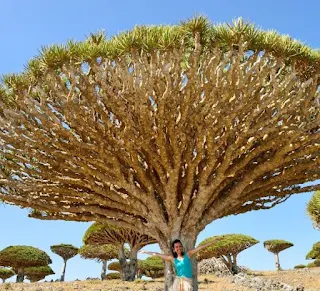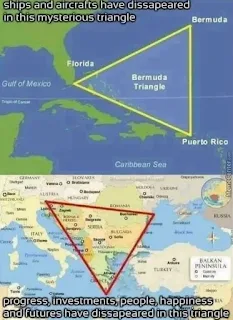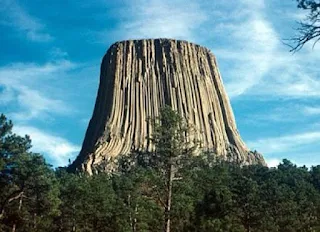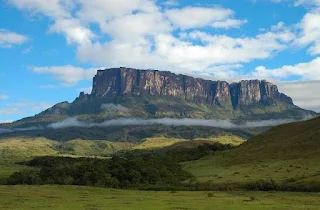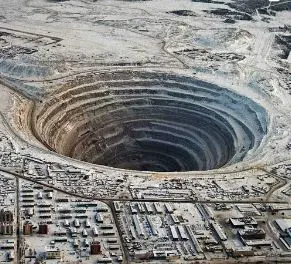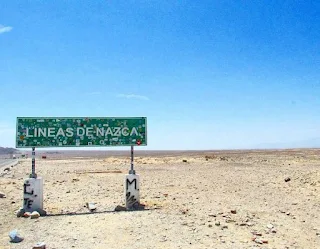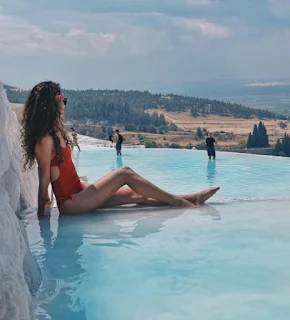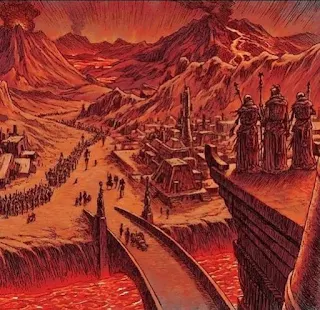The world we live in is full of fascinating places that draw millions of tourists from all over the world, from one end of the globe to the other.
While some of these places may appear to be beautiful and conventional, others may appear strange, amazing, or even mysterious, while others may be unique but obscure and less well-known.
We've compiled a list of some of the world's most odd and intriguing locations and decided to share them with you. Feel free to contribute to the list in the comments area below.
10 Strange and Mysterious Places to Visit on Earth
1. Socotra
This is a small island or archipelago (group or chain of islands) in the Indian Ocean, with the largest island, Socotra, accounting for about 95 percent of the archipelago's total landmass. Socotra is located 240 kilometers (150 miles) east of the Horn of Africa and 380 kilometers (240 miles) south of the Arabian Peninsula.
During a survey of the archipelago's flora and fauna undertaken by a team of UN biologists in the 1990s, it was determined that there are approximately 700 endemic species found nowhere else on the planet; only Hawaii, New Caledonia, and the Galapagos Islands have more.
A recent discovery of literature in many languages, notably a wooden tablet near Palmyrene dating to the 3rd century AD, indicates that those who utilized Socotra as a trading base in antiquity came from a variety of backgrounds.
Another find was made in 2001 by a group of Belgian speleologists from the Socotra Karst Project, who unearthed a vast number of inscriptions, drawings, and archaeological artefacts deep inside a massive cave on the island of Socotra. They were left by sailors who visited the island between the 1st century BC and the 6th century AD, according to additional evidence.
Socotra has been dubbed "the most alien-looking region on Earth" by experts. It is regarded the jewel of biodiversity in the Arabian Sea and is one of the most isolated landforms on Earth that is not volcanic in nature. Socotra has a population of over 40,000 people.
2. The Bermuda Triangle (also known as the Devil's Triangle)
The Devil's Triangle, often known as the Bermuda Triangle, is a region in the western North Atlantic Ocean having apexes in Bermuda, Miami, Florida, and San Juan, Puerto Rico. It is around 500,000 square miles in size. A number of planes and ships are claimed to have vanished in this area under unexplained circumstances.
Although it is not on any official map and you will not know when you cross the line, the triangle does not exist, according to the US Navy, and the term is not recognized by the US Board on Geographic Names, different cultures have attributed various disappearances to extraterrestrial activity.
According to a BBC report, "one plane probably suffered from catastrophic technical failure as a result of poor design, while the other is likely to have run out of fuel," there is now a reasonable explanation for the two British commercial planes that disappeared in the area some time ago, with the loss of 51 passengers and crew.
Some people still believe that the Bermuda Triangle is a real region where dozens of ships, planes, and people have vanished without explanation. The Bermuda Triangle is one of the world's most enigmatic places.
3. The Devil's Tower
The first U.S. national monument, Devils Tower National Monument, also known as Grizzly Bear Lodge, was established on September 24, 1906 in northeastern Wyoming by President Theodore Roosevelt. It is located near the Belle Fourche River and covers 2.1 square miles (5.4 square km). It has a natural rock tower that has been revealed due to erosion. Devils Tower was the first National Monument in the United States.
While geologists agreed that the intrusion of igneous material caused Devils Tower to develop, they couldn't agree on how that process occurred. The tower is a holy location for several Plains Indians, including the Lakota Sioux, Cheyenne, and Kiowa, and it's also a popular rock climbing destination.
June is a popular climbing month on the Plains because it is a significant time in the Plains religious calendar when many people visit sacred sites for religious activities. As a result, there has been a controversy, with many Indian leaders objecting to climbers scaling the monument, which they perceive to be a desecration.
Although some people continue to climb in June, many others have chosen to shun it entirely out of respect for other people's religious beliefs.
4. The Dolls' Island
One of the world's weirdest, most peculiar, and scariest tourist attractions - The Island of the Dolls – is located on what could be described as a gloomy and scary island in the canals of Xochimico near the city of Mexico.
According to legend, sometime in the 1950s, the Island's only resident, Don Julian Santana, was preaching the word of the Lord Jesus Christ at a time when many Mexicans were not keen to hear it because it was believed that such messages could only come from anointed priests, several people took offense to his actions to preach about Christ and decided to beat him up for his sins, Juan then decided to stay in that location of the Island and look up for every doll he could find.
According to another tale, Don Julian Santana discovered the body of a drowned kid in the canal during the time, and soon after noticed a doll floating by in the canal, which he decided to place on a tree to please the girl because he was troubled by her death.
As he continued to do so in order to pacify her tortured soul and preserve the island from future evil, the story took a particularly tragic turn in 2001, when Don Julian drowned in the canal with the small girl.
There are many legends surrounding this island, including one that claims Don Julian went insane and mistook the dolls for actual children, whom he retrieved from the canal and attempted to resurrect.The island which is now run by the family members as a tourist attraction continues to attract tourists till today.
5. Roraima Mountain (Venezuela, Brazil and Guyana)
The triple boundary point of Venezuela, Brazil, and Guyana is located on this magnificent tabletop mountain with precipitous 400-meter high cliffs on all sides. Prior to the arrival of European explorers, the mountain held a special significance for the indigenous inhabitants of the region, and it occupied a prominent position in many of their myths and stories. A detailed hiking trip guide for Mount Roraima may be found here.
6. Mir Mine
There is one spot in Siberia that is not suitable for flying over yet is worth seeing. Mir Mine is a man-made hole that is 1,720 feet deep. If you have the opportunity, you should visit this diamond mine. It is a former open pit diamond mine in Mirny, Eastern Siberia, Russia, that is currently dormant.
The mine is the second largest excavated hole in the world, after Bingham Canyon Mine, with a depth of 525 meters (1,722 feet) and a circumference of 1,200 meters (3,900 feet). The airspace above it has been blocked due to reports of people being sucked in by the downward air flow.
7. The Lines of Nazca
Thousands of years ago, these lines in the Nazca Desert were constructed. These are best viewed from above since they can portray animals, people, and other essential elements to the Nazca people. Seeing them might fill you with awe and surprise.
Several researchers have attempted to decipher the designs' meaning, but they all agree that they have religious significance. The following is a synopsis of these theories.
"The geometric ones could represent water flow or be linked to water-calling ceremonies." Plants, spiders, and birds could all be fertility symbols. Irrigation schemes or gigantic astronomical calendars are two further possibilities."
One theory is that the Nazca people built them so that their gods might view them in the sky, although there have been several others.
8. The Entrance to Hell
It's a sight to behold, this never-ending blaze. It appears to be a glimpse behind the dark gates of Mordor in the Lord of the Rings, but it was created by accident by geologists in 1971 when a team of Russian scientists discovered the location, which was thought to be a significant oil and gas deposit at the time.
The scientists planned to build a drilling rig in order to gain access to the gas reservoir, but something went wrong. During the incident, no lives were lost.
9. Pamukkale Pools
Earthquakes cracked the soil and created these terraced lakes. These earthquakes resulted in the formation of calcium carbonate mineral-rich hot springs. This terrace of pools is a sight to behold, as they overlap one another.
It is possible to observe them, but visiting them is prohibited. This is due to excessive bathing, as evidenced by several of the people in the photograph below.
10. Beppu's Nine Hells
The Nine Hells are located on the Japanese island of Kyushu. The Nine Hells of Beppu is well-known in Japan, although foreigners are unfamiliar with it. If you're in the area, this is a great place to stop by.
The peculiarity of this attraction is that it consists of natural ponds of various colors. It's unusual, but not impossible, for each of these nine ponds to be a different color.
The minerals in each of these ponds correspond to various colors, making this location not only distinctive, but also intriguing and amazing.


